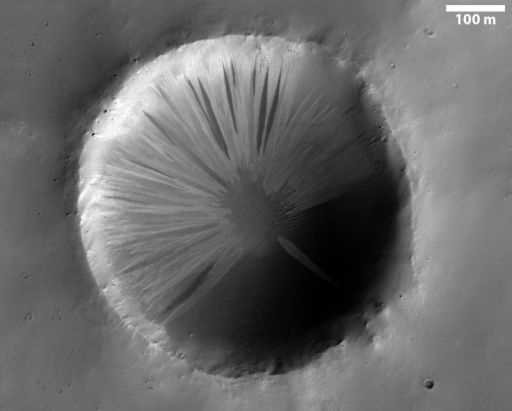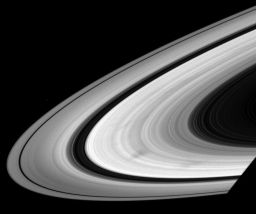Emily Lakdawalla • Jul 14, 2008
What's up in the solar system for the week of July 14
What's new in the solar system this week?
As has been the trend for the last few weeks, there aren't a lot of close encounters planned for the Cassini mission, which continues its stable once-per-week orbits of Saturn; it just this morning passed periapsis (its closest approach) of Rev 76, crossing to the sunlit side of the rings. With the once-per-week orbits, periapsis happens on Mondays and apoapsis on Thursdays. However, even if there aren't a lot of flybys happening, Cassini is very busy. I have a new resource for checking up on what Cassini is doing: this page put together by "jmknapp." He takes data that is provided to the public describing Cassini's trajectory (so-called "SPICE kernels") and spits it out as tables describing Cassini's science plans. This information is probably a bit technical for some of you, but here's one exercise you can do:
On the surface of Mars, it is early winter in the southern hemisphere (Ls 99°). Today is sol 1,610-11 for Spirit and 1,589-90 for Opportunity. Not a lot of action happened on either mission last week, as far as I can tell. The MARCI team continues to report clear skies for Spirit, Opportunity, and Phoenix, but more water ice clouds elsewhere on Mars.Phoenix is just starting sol 49. If you use Mark Lemmon's raw images pages to follow the mission you would have been frustrated over the weekend, as his site was down; it's back up now, but he still can't edit it, so the pages are only up-to-date as of sol 45. There have been lots and lots and lots of images taken since then though, so Phoenix has been busy. I've updated my robotic arm camera raw image pages to sol 48. It looks like on sol 46 and 47 there were lengthy measurements by TECP -- that's the instrument at the end of the arm that sticks prongs into the soil to measure its temperature and electrical conductivity -- and there's a neat pair of images from sol 48 showing the scoop buried in the soil, ready to dig. I will do a more thorough update on Phoenix status tomorrow or Wednesday (or after Mark gets his site working again). Oh, and James Canvin completed his work on his version of the Phoenix mission success panorama.

NASA / JPL / UA / Texas A & M / color mosaic by James Canvin
Amateur version of the Phoenix Mission Success Panorama (the 'Peter Pan')
This is James Canvin's version of Phoenix' Mission Success Panorama, which includes 150 separate camera pointings taken from sols 13 to 43. Canvin produces his mosaics using software he developed for Mars Exploration Rover panoramas. The "click to enlarge" version is a quarter of the full resolution; click here for the full-resolution version (25 MB).
NASA / JPL / UA
Slope streaks in a little crater in Arabia Terra
Slope streaks are thought to be caused by dust avalanches that strip away layers of dust to reveal a darker underlying surface. Here, a 600-meter crater's walls are striped by slope streaks. This is a detail from a much larger HiRISE image containing a great many slope streaks.The big news on MESSENGER this week is that they have released to the Planetary Data System all the data from their flyby of Mercury! I will be writing more about that later this week, but if you can't wait I strongly recommend you check out Jason Perry's mosaics of the flyby images. is cruising toward its second encounter with Mercury on October 6, 84 days away. It is 182 million kilometers from Earth and 141 million kilometers from Mercury. Deep Impact is continuing its EPOCh observations of extrasolar planets. Rosetta is closing on asteroid (2867) Steins for its September 5 encounter. New Horizons is 9.5 AU from Earth and 21.1 AU from Pluto. Voyager 1 and 2, Dawn, Hayabusa, and Stardust are all in cruise mode, talking to Earth from time to time; Genesis is in hibernation.
The Time is Now.
As a Planetary Defender, you’re part of our mission to decrease the risk of Earth being hit by an asteroid or comet.
Donate Today

 Explore Worlds
Explore Worlds Find Life
Find Life Defend Earth
Defend Earth


